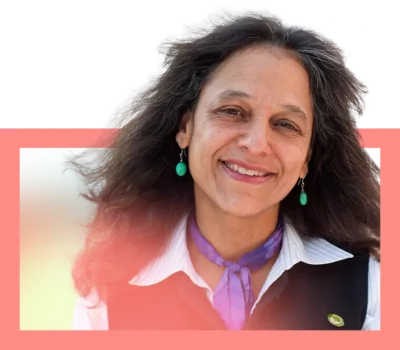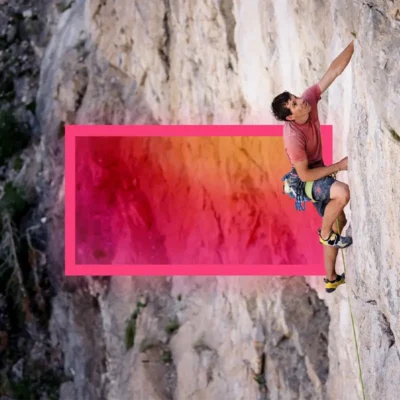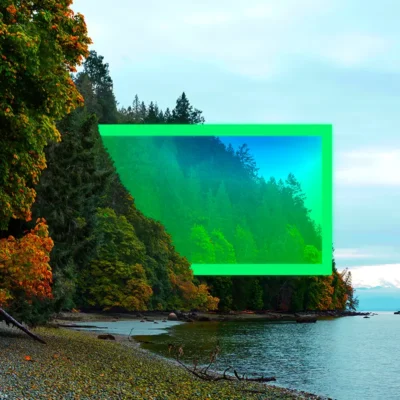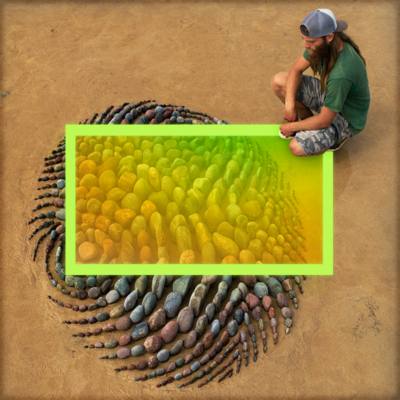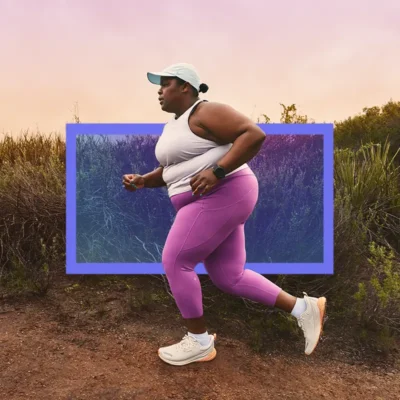The stuff I’m here to study: Life on life on life
Ecologist Nalini Nadkarni – known as the “Queen of the Forest Canopy” – has spent a career clambering around tree tops, studying the interdependence of plants and animals in an ecosystem. But when an accident in the canopy brings Nalini’s work to an abrupt halt, she is forced to reckon with interdependence of a profoundly different nature.
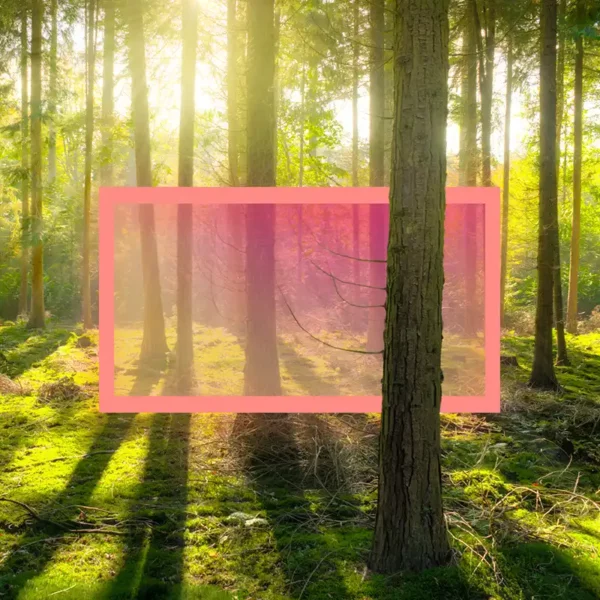
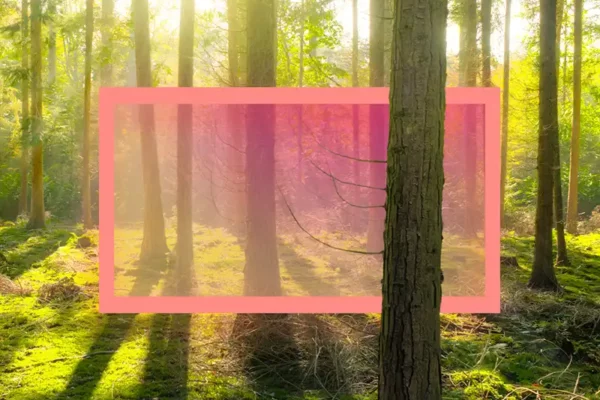
Table of Contents:
Transcript:
The stuff I’m here to study: Life on life on life
NALINI NADKARNI: When forests suffer a disturbance, younger species of trees start to fulfill the roles the old trees used to play. The same is apparently true for me: My recovery demands that I allow people in my life to change their roles to balance for my new limitations. And as it happens, the adjustment isn’t all that difficult for us to make. Because I’m not the linchpin. I never was.
ROHAN GUNATILLAKE: Biologist Nalini Nadkarni – known as the “Queen of the Forest Canopy” – has spent a career clambering around tree tops, studying the interdependence of plant and animal life in an ecosystem. In today’s Meditative Story, Nalini shares a moment of disruption in her life that reveals an interdependence of a profoundly different nature.
In this series, we combine immersive first-person stories and breathtaking music with the science-backed benefits of mindfulness practice. From WaitWhat and Thrive Global, this is Meditative Story. I’m Rohan, and I’ll be your guide.
The body relaxed. The body breathing. Your senses open. Your mind open. Meeting the world.
NADKARNI: We pause in the middle of a spacious, natural clearing. I see a herd of Roosevelt elk feeding just at the horizon line. We all pause and observe in silence for a moment, and then move on through the forest.
I have three graduate students with me today, all making their first ascent to the canopy – the uppermost layer of the forest, where trees meet the sky. They’re jittery about the climb but I’ve prepared them for months. I know they’re ready.
We navigate a series of logs to reach our study site, a glade where I’ve pre-rigged a bigleaf maple tree for the climb. Rigging is both a science and an art. It’s important to identify the mosses we’ll sample before an ascent, and which limbs to place my line on to get to them. .
Once I spot them, I shoot my lines up and over the branch – a powerful slingshot bolted to a foot-long aluminum rod, with a loaded fishing reel attached to the bottom end. I tie a 2-ounce fishing weight to the end of the line, pull back, release the bail, and zoom! Up it goes. The weight and line drop to the ground. I tie a strong nylon cord to the end of the fishing line, reel that up and over, and then use the nylon cord to pull up my climbing rope. I tie the end of the rope to the tree trunk, and I’m ready to climb.
Big Leaf maple trees have a generous, spreading architecture. Their leaves, each one the size of my open hand, block out the sky above us. The maple trees lose their leaves in the winter. This allows the mosses on the limbs access to light and water. And as a result, over 50 species of mosses and lichens grow on a single tree. They form a thick carpet in a patchwork of verdant shades. And beneath that, an accumulation of rich, dark soil, up to 12 inches thick, cloaks the branches and trunks.
That’s the stuff we’re here to study: Life on life on life.
This tree we’re about to scale is around 150 feet tall – about the size of a 15-story building. And the branches where our mosses live, roughly mid-crown, are a good 50 feet off the ground, give or take. We set up the ropes, and I walk the students through the climbing technique. I clip my harness to a pulley and place my feet into a loop at the bottom of the rope. Then I move the ascender up the rope with each step, edging my way gradually up the tree, like an inchworm.
I climb first – to make sure it’s safe. I feel a deep connection to the tree. It is a safe place for me. As I move from branch to branch, I clasp each limb, throw my legs over and around them, and swing with the tree as it sways in the wind. It’s as if the tree is my dance partner, and I’m conforming to its movements.
I am most myself when I’m climbing. That’s who I am, who I’ve always been. Ever since I was tall enough to reach the first branches of the maple trees that lined my parents’ driveway, I have felt a pull to climb, to view the world from above. Up here in the canopy, I feel suspended between the forest below and the sky above – connected to both in this in-between world.
GUNATILLAKE: This in-between world. Nalini between the earth and the heavens. Us between this moment and the next. Let’s be curious about boundaries and about what connects them.
NADKARNI: Falling rain meets these leaves first, before reaching earth. I see trees as the link that ties the earth and sky together. I notice insects, like the rugose stag beetles that crawl over the tree’s bark, looking for nesting sites. Animals like the Douglas Squirrel and the Northern Spotted Owl use them for shelter and food.
Every single second of the day this tree breathes, inhaling carbon dioxide and exhaling oxygen. At night, it reverses the process – pulling in oxygen, pushing out carbon dioxide. No trees, no air, no life.
I tie into a branch fifty feet above the ground, and yell down to my graduate students, “Come on up!”
I see them gather their ropes and shimmy into their harnesses. I gaze at the dark, damp forest floor stretching out in every direction. I can hear the wind moving through the leaves, the jangle of clips and harnesses below, the zip of their pulleys inching up the line. The air around me feels thick and living.
Perched on the branch, I bend in closer to take a look at the moss we’ll be collecting today. I wonder, which branch should I take? Suddenly, I don’t feel any tension on my rope as I lean forward.
And I fall.
My body is crumpled on the ground. I see the tree I’ve just climbed above me. Three very scared and concerned faces hover over me. One of them tells me I made no sound as I fell. I hit no intervening branches on the way down. I just fell like a silent sack of sand, 50 feet to the forest floor.
I remember none of it.
I go in and out of consciousness. Sharp pains. Panic. “Is this it?”
Everything hurts but no one will move me until help arrives. Hours later, I hear the chop, chop, chop of a helicopter coming close. The EMTs hustle through the forest, thrashing through the underbrush to get to me.
I’m in the hospital. My daughter Erika’s face is the first thing I see once I wake up. My husband Jack makes his way here from a remote part of Costa Rica, where he’s been studying ants.
Two days pass. I have five burst vertebrae. Nine broken ribs. My pelvis is broken in three places. My spleen is ruptured, my left lung has collapsed, my fibula is splintered. I have four operations.
Tonight I’m alone. Just me. Unless you count the squad of nurses bombarding me with care by the hour, checking vital signs. The machines attached to me beep and hum. A sterile smell hangs in the air. There are no windows. I long to be outside. Moving.
My mind is wild with panic. I might never walk again. Much less hike. Much less climb.
Until now, I’ve spent my life in constant motion. Always coming or going. A boyfriend in graduate school even wrote a poem for me called, “The Vapor Queen.” I would be present for a few weeks, and then whoosh – I’d be gone. To the field, to the lab, to the trees. But I’ve been stopped. Very suddenly. With a single fall.
How’s this for irony? My academic expertise is the subfield of ecology that focuses on what we call “disturbances” – sudden environmental events that transform an ecosystem. Sporadic. Unpredictable. Like a forest fire. Or a tornado.
Or, a 50-foot fall from a tree.
After a system is disturbed, the web of relationships surrounding it is absolutely essential to restore health to that system – to ensure its survival. I have spent my whole career studying this great thread of interdependence that is woven into the fabric of every ecosystem. Yet this is the first time I’m seeing it through the lens of my personal experience.
People within my web start interacting with me in ways that are different from the ways they did before my fall. My husband makes the beds. He cooks breakfast and dinner. He does it without complaint. My students write out progress reports I used to compose and submit. Erika invents creative new ways to engage me.
One day, sensing my mood, Erika says, “Mom, I think we need to do screams.”
“What are you talking about?”
“You, in the wheelchair, with me. We’re going to the park. And we’re going to scream our heads off at the trees.”
The next day, we wake up early and drive out to McLean Park. We are the lone car in the parking lot. The moist morning air shrouds the trees and us in a gentle mist. The alder trees on the pathway’s edge seem to lean toward us, to beckon. She wheels me out to an open area. I pause. I hesitate. Erica smiles at me, as if to give me permission. And then I scream as loud as I can – letting out all my frustrations.
After a few minutes of this, she changes gear. She instructs me to whisper each thing that I’m grateful for. I look at Erika as I whisper, and I realize something astonishing: Our roles have shifted. I’m not being the know-all mom that is caring for her little daughter. She is the one who knows how to care for me.
When forests suffer a disturbance, younger species of trees start to fulfill the roles the old trees used to play. The same is apparently true for me: My recovery demands that I allow people in my life to change their roles to balance for my new limitations.
And as it happens, the adjustment isn’t all that difficult for us to make. Because I’m not the linchpin. I never was. I’m expendable, in a certain way, and there’s a calmness that comes out of knowing I’m not the one holding it all up.
Perhaps this disturbance is an opportunity for me to consider other roles I might play in my life. Things I haven’t admitted out loud. I want to be spiritual. I want to create. Maybe never climbing another tree wouldn’t necessarily be a bad thing.
But if not Nalini the tree climber, the scientist, the provider mom, the doer, then who am I?
GUNATILLAKE: Who am I? A question meditators have sat with since meditation began, a question at the heart of all mindfulness practice. Who am I? Notice any answers that come up. And ask the question again all the same.
NADKARNI: I used to watch hummingbirds while sitting in the crooks of giant Figueroa trees in the Monteverde Cloud Forest Reserve. I find them fascinating because so much depends on them.
This small bird flits from plant to plant, dipping its beak into petals shaped like tiny drinking cups. Sucking out the nectar. The pollen stuck on its beak is carried from plant to plant, branch to branch, tree to tree. That pollen will soon be out in the pasture, fertilizing a flower on a lone tree. Little fruits will bud and be picked up by a bird who will eat the fruit and excrete the seeds. The seeds will germinate, and a new generation of plants will be born.
It’s the manifestation of an unseen network – between trees and across pastures – ensuring the next generation of that rare plant. And it’s navigated by these birds who boost forest health and diversity by transporting materials from one part of the ecosystem to another. All of it connected by their invisible threads.
Up until now, I’ve always stayed pretty much within my network – a predictable circle of academics, biologists, ecologists. Even when I changed universities, the people around me were mostly the same. I want more diversity in my life now. Something different. A new ecosystem.
A vat of curry simmers on the stove.
Tonight, I make Indian. It’s Monday – my favorite night of the week. I cook up all this delicious food and invite 25 people over to share it. I’m standing in the middle of the mess of the kitchen I’ve made. The counters are strewn with shards of chopped ginger, dusted with flour for rolling out chapatis, small metal cups to be filled with fragrant chutneys, all of it needing to be tidied up for the two dozen guests arriving at 6.
These Monday night dinners are fashioned after a Mormon tradition called Monday Home Evening. Here in Utah, we never schedule classes or lectures on Monday nights, because Mormon families stay home on Mondays to spend time together, playing board games, reading scriptures, sharing food. So I figure, when in Utah… Welcome to Monday Home Evening, Nalini style.
Each week I have a new culinary theme: Jewish cooking. Italian food. Breakfast for dinner. I always leave a jigsaw puzzle, partly completed, on the coffee table. We sit around, maybe put a piece in place, talk, connect.
I find these Monday home evenings help me replenish myself each week. It took the disturbance in my life to understand just how profoundly I need to feel part of a community. And it turns out I’m not alone in being hungry for this. This interdependence isn’t a weakness, it’s essential.
The living room is full.
I’m mobile again. Time and a lot of physical therapy are restoring me to mobility – and to strength. But things are different. Right at this moment, I’m not ascending the canopy. Tonight I’m less the biologist, and more the hummingbird.
Here in my home are conservationists and social scientists. The checkout girl from the local store is here, and our 90-year-old neighbor, too. There’s a dog groomer, and a woodworker. People from all different professions and all walks of life having the most extraordinary – and the most unlikely – conversations. Thread-weaving.
The stories my guests share are like portals to wisdom I get to walk through each Monday night. What a gift it is to listen to each other, to share our vulnerabilities, heartbreaks, fears, and dreams.
Everyone takes a fall of some kind. All of us, eventually, get stopped. Every system is subject to disturbance. And all of us, together, can help get things back up and running.
When I first fell, I worried I might be cut out of everything that defined me. But gradually, week by week, gathering by gathering, a new life takes shape.
I’m not where I was before I fell. But I’m not lying in the hospital, scared that I’d never walk or climb again. Instead, I’m in a “third state” of Nalini – neither better nor worse – but different, from who I was before I fell.
This is what happens when a system is disturbed. I know this, because I’ve become an expert in disturbance – what it takes away, and what it bestows.
Trees that have survived a fire will bear fruit again when the hummingbirds return. Just as when floodwaters recede, devastated neighborhoods revitalize – every bit as vibrant, but forever changed.
Life on life on life.
Rohan’s closing meditation
GUNATILLAKE: When Nalini took her students up into the tree canopy, she talked about it as an in-between space. I also like to think about it as a connecting space. A connecting space between the ground and the sky, or in other language, between heaven and earth.
Let’s see if we can tune into that as we settle into our short meditation together. Part of our body touching the ground, part of it in the heavens, even if only a meter or two high above that ground. The rest, the connection.
We’ve always been the connection between heaven and earth. We just don’t always recognize it. I love the scene of Erika, Nalini’s daughter, taking her out to open ground to scream and then like a wise Zen master switching things up and asking her to whisper something she is grateful for.
If you, too, want to scream sometime soon then I’m not going to lead you in that here but you do you. I am, however, going to invite you to think about something you are grateful for. And whisper it. The kind of whisper that no one can hear, silent even.
There is no right answer, other than the one that first comes to mind. What are you grateful for? Allow the answer to arise. And whisper it. And let that whisper warm the air around you.
Whisper it, and let it soften any tension within you. Let it be felt in the heart. Life on life on life, the line from Nalini’s story that I think will actually stick with me forever to be honest. So let’s play with that line.
Life.
Aware of how things in your body and your mind are just happening. The body breathing. Thoughts arising. Life just happening. Then there’s all the things we feel we control. The ability to move our bodies. The ability to think about something on purpose. Being able to smile. Being able to think about the last meal we had, the last person we kissed. All seemingly higher than the automatic animal processes we also contain.
Life on life.
Finally that which knows everything else: Consciousness. Awareness itself. That which holds all experience.
Life on life on life.
Thank you Nalini for such a wonderful story. And thank you for all that you do, which is more than you think, you know. See you again.

